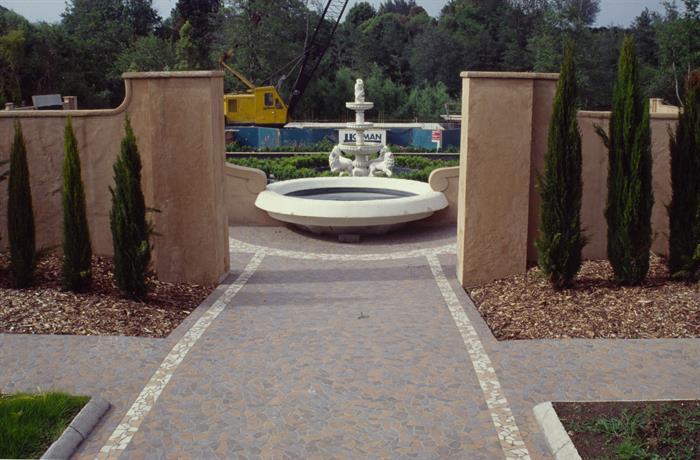Walls in gardens
Walls are good keepers of privacy, particularly if made of brick or concrete. If they are built for this purpose make sure they are of a height which does the job, that is above eye level. Extra high walls though will need extra support.

Brick
For a structurally strong wall it should be two bricks thick.
If only one brick thick, regular buttressing is needed or the wall can be staggered with panels stepped forward and back, or built in a serpentine shape (although both these styles may be too decorative for some tastes).
A wall two bricks thick should have a concrete foundation. This involves digging a trench, the depth depending on the height of the wall and the type of subsoil. On average it should be approximately 235 cm deep and twice as wide as the wall Upon this the bricks are built up in a method called `bonding'. Bonding involves laying the bricks both lengthways and crossways ‑ this binds the wall and gives it strength. Provided the wall does not exceed 6 ft it should not need buttressing.
If built in a damp position, the wall will last longer if a damp proof course is built in. It should be built in the base of the wall, about 150 mm above ground level. Suitable materials are hard brick, asphalt and bituminous sheet.
Coping
To prevent water from seeping in and to finish off a wall, it is topped with coping. The simplest sort is simply bricks laid on edge but there is also a range of pre‑cast concrete and dressed stone copings which can be used. The different styles of coping may be useful in matching the wall with the predominant style in the locality.
Expansion Joints
If the wall is longer than 10 m then it may be necessary to provide expansion joints as it may be liable to subsidence and contraction or expansion and crack. A gap of 1/2 inch, in a staggered fashion, should be sufficient to allow movement and not spoil the appearance of the wall.
Concrete
Concrete blocks are quite a versatile material for building walls with as they can come in many colours and different sizes. The blocks should be built on a concrete foundation but needs no buttressing. If extra strength is desired it can be reinforced with rods running from the foundation up through the hollow concrete blocks and concreted in place. Capping is best done with a pre‑cast slab.
Want to Learn More?
Check out horticultural and landscaping publications in the ACS Bookshop: >>> www.acsbookshop.com >>>
For more information on Courses on Landscaping, Horticulture and Plants:
In Australia: http://www.acs.edu.au/Courses/horti.aspx
In the UK: http://www.acsedu.co.uk/Courses/horti.aspx
You may also be interested in....